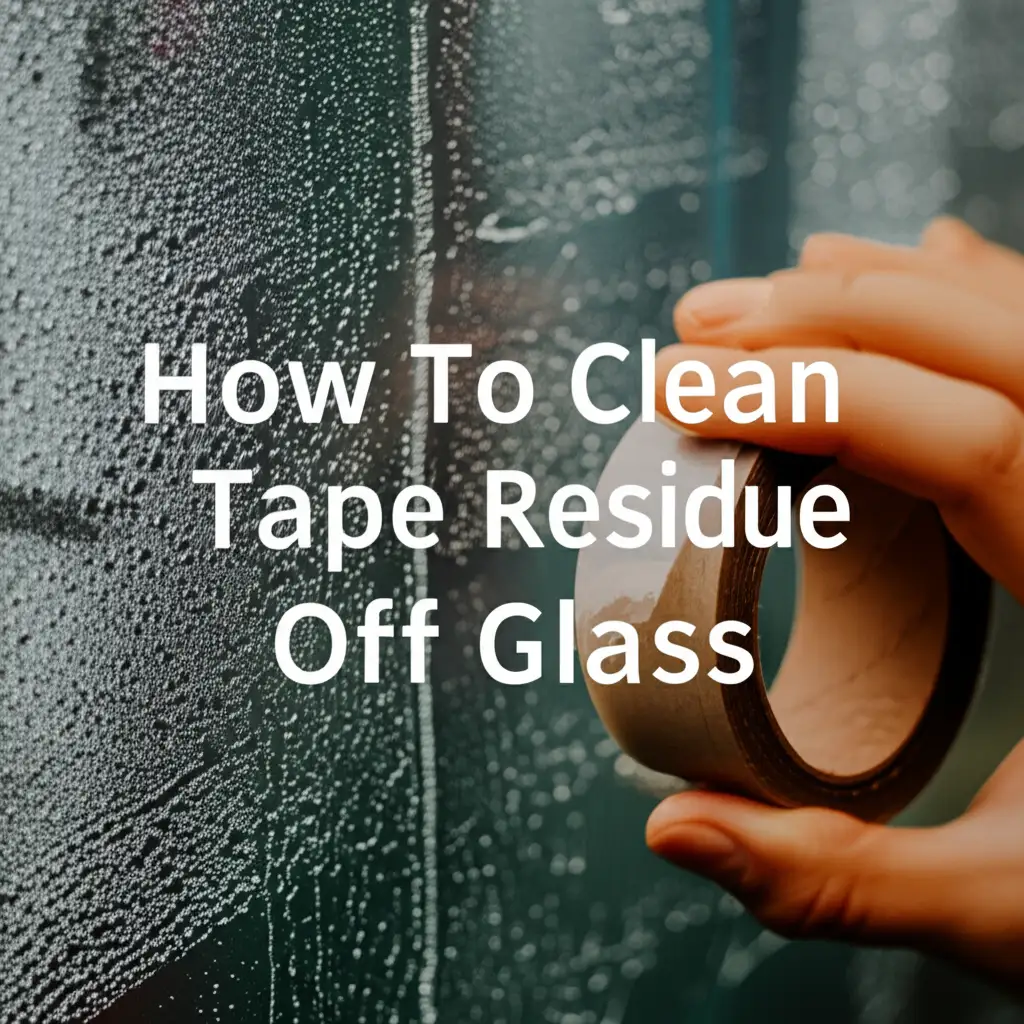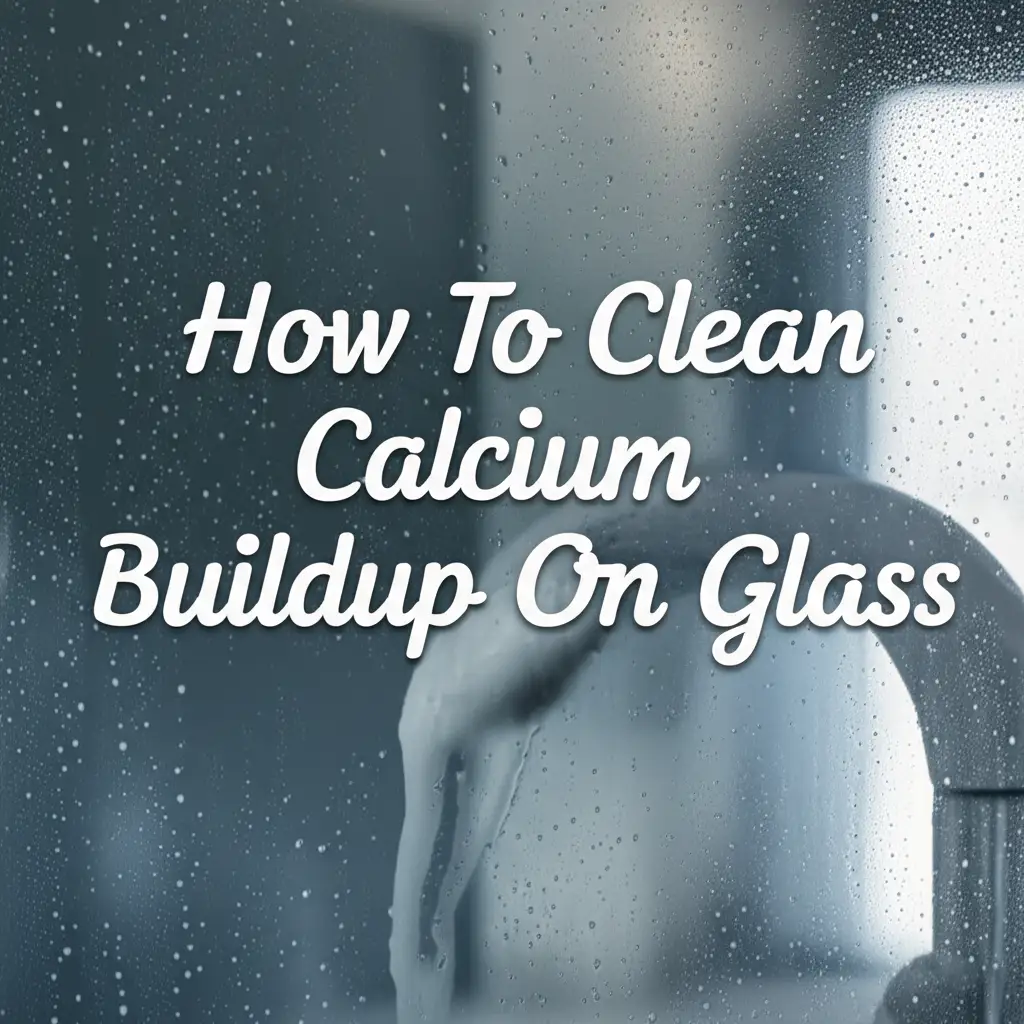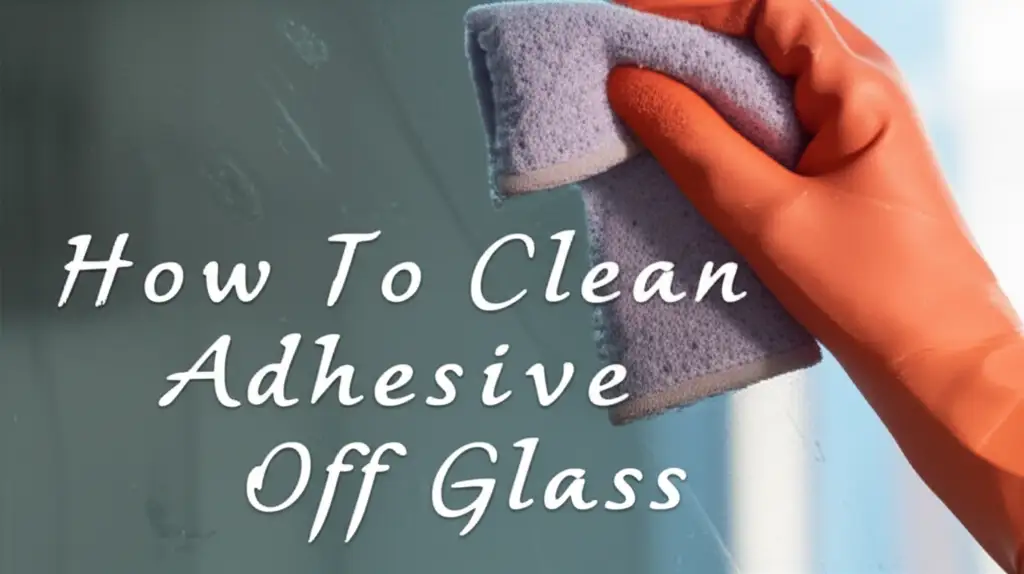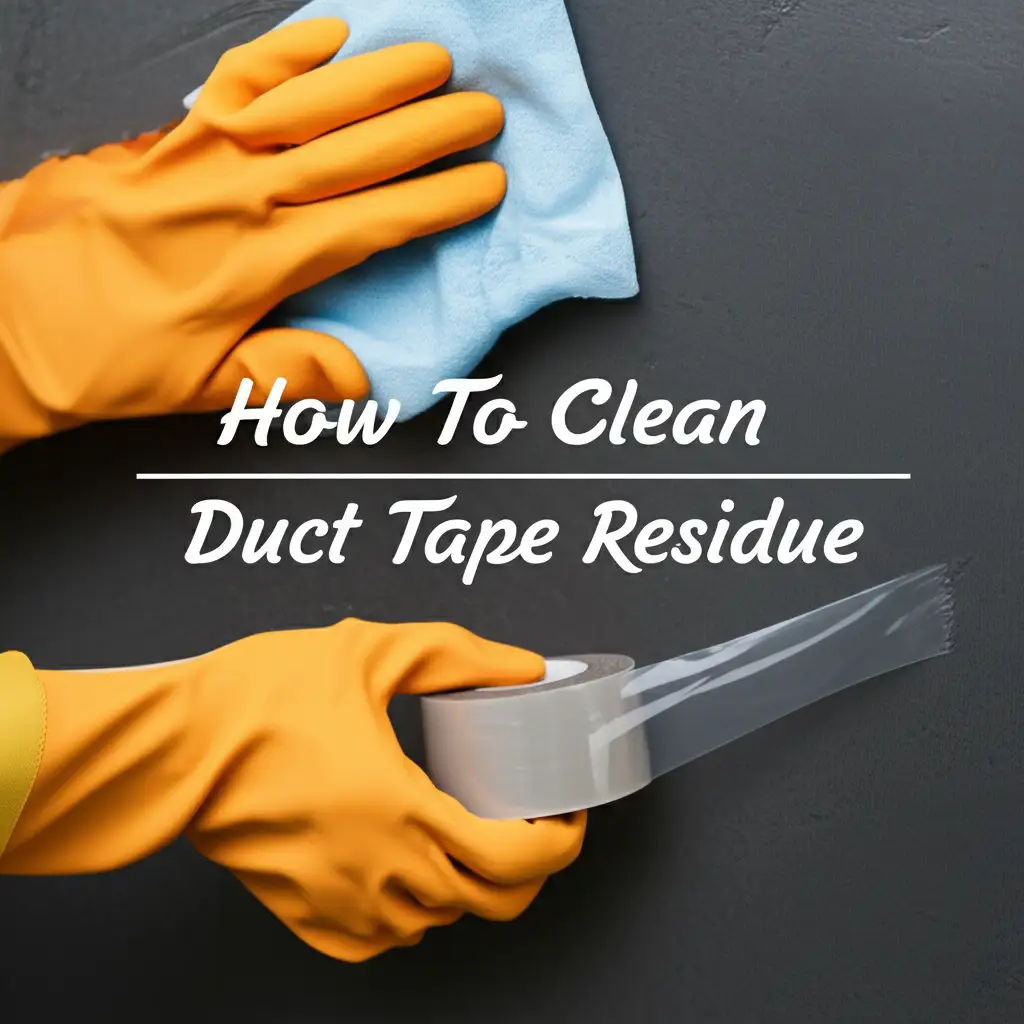· Home Cleaning · 15 min read
How To Clean Sticker Residue Off Glass
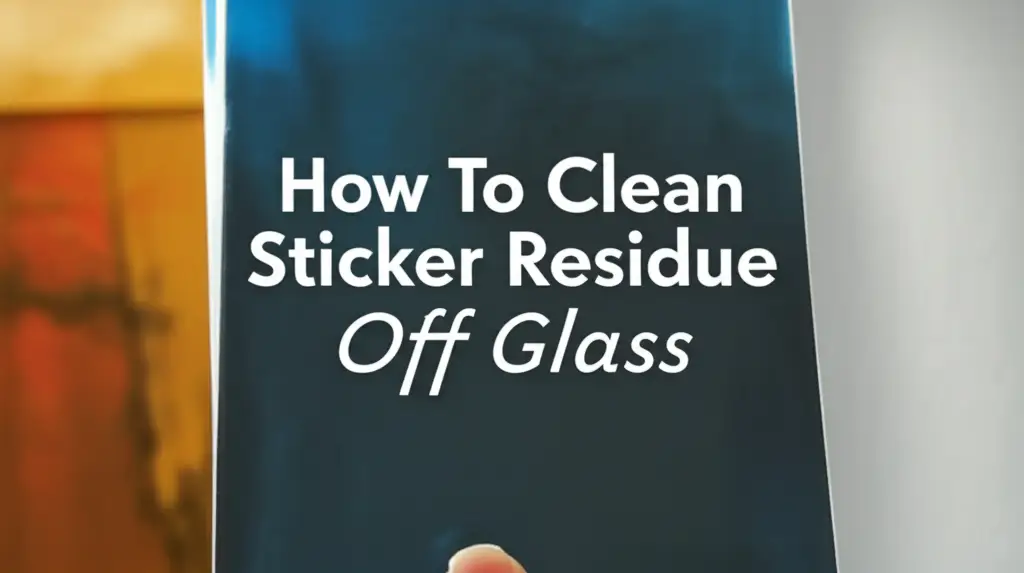
How To Clean Sticker Residue Off Glass Effectively
Have you ever peeled off a sticker, only to be left with a stubborn, sticky mess on your beautiful glass surfaces? That gooey adhesive can cling to windows, mirrors, jars, and tabletops, ruining their clear appearance. I know the frustration of looking at a glass surface that should be sparkling but instead shows unsightly goo. Learning how to clean sticker residue off glass is a common home challenge.
This article provides simple, effective ways to tackle even the most persistent sticky spots. We will explore various methods, from everyday household items to specialized cleaning products. You will learn the proper techniques to ensure your glass is spotless and streak-free without damage. Let’s get your glass shining again!
Takeaway
- Always start with the gentlest cleaning method before trying stronger options.
- Apply your chosen solution directly to the residue and allow it to soak to loosen the adhesive.
- Use a non-abrasive tool like a plastic scraper or old credit card to gently lift the softened residue.
- Wipe the area clean with a microfiber cloth and finish with a standard glass cleaner for a streak-free shine.
- Test any new cleaning agent on a small, hidden area of the glass first to ensure no damage occurs.
How do you clean sticker residue off glass?
You clean sticker residue off glass by first softening the adhesive with heat or a suitable solvent like rubbing alcohol, vinegar, or an oil-based product. After softening, gently scrape the residue away using a plastic tool or a razor blade held at a shallow angle. Finally, wipe the area clean with a microfiber cloth and glass cleaner for a streak-free finish.
Understanding Sticker Residue and Glass Safety
Sticker residue is a common problem. It consists of dried adhesive that remains stuck to a surface after a sticker is removed. This residue bonds strongly with glass. This makes it challenging to remove without the right approach. Different types of adhesives respond better to different cleaning agents.
Before you begin, safety is important. Always protect your hands with gloves, especially when using stronger solvents. It is also wise to test any new cleaning method on a small, inconspicuous area of the glass. This ensures the cleaner does not cause any discoloration or damage. Gather your tools before you start. You will need microfiber cloths, spray bottles, and possibly a plastic scraper or an old credit card. This preparation step makes the cleaning process much smoother and safer for you and your glass.
Gentle Methods for Removing Sticker Residue
When you face sticker residue, start with the gentlest methods. These options use common household items. They are often effective for fresh or less stubborn adhesive spots. This approach prevents potential damage to your glass.
Warm Soapy Water
Warm water and dish soap can often do the trick. The warmth helps to soften the adhesive. The soap helps to break it down. I find this method works best on newer residue or paper-based stickers.
- How to use:
- Fill a spray bottle with warm water and a few drops of dish soap.
- Spray the residue generously, making sure it is fully soaked.
- Let it sit for 5-10 minutes. This gives the water time to work on the glue.
- Gently rub the area with a soft cloth or sponge. The residue should start to roll off.
- Wipe clean with a damp cloth and then dry with a clean microfiber cloth.
Rubbing Alcohol
Rubbing alcohol is a great solvent for many types of adhesives. It evaporates quickly. This makes it ideal for glass surfaces. I often reach for rubbing alcohol first for slightly tougher sticky areas.
- How to use:
- Dampen a clean cloth or cotton ball with rubbing alcohol.
- Press the alcohol-soaked cloth onto the residue.
- Hold it there for a minute or two. This allows the alcohol to dissolve the glue.
- Gently rub in a circular motion until the residue comes off.
- Clean the area with a glass cleaner to remove any streaks.
Vinegar Solution
White vinegar is an acidic solution. It works well on many adhesives. It is also a natural cleaning agent. You can also learn how to use vinegar to clean a glass stove top. This makes it a popular choice for eco-conscious cleaners.
- How to use:
- Mix equal parts white vinegar and warm water in a spray bottle.
- Spray the sticker residue thoroughly.
- Allow the solution to sit for several minutes. Longer wait times help with tougher residue.
- Scrub the area gently with a non-abrasive sponge or cloth. The adhesive should loosen.
- Rinse with clean water and dry for a sparkling finish.
Oil-Based Products
Various oils can effectively break down sticky residues. This includes cooking oil, olive oil, or even peanut butter. The fats in these products dissolve the adhesive bond. This is a very safe option for most glass types.
- How to use:
- Apply a small amount of your chosen oil to the sticker residue.
- Let it soak for 5-10 minutes. This allows the oil to penetrate the adhesive.
- Gently rub the area with a clean cloth. The residue should become gooey and easier to remove.
- Wipe away the oily residue with a paper towel.
- Clean the glass thoroughly with a standard glass cleaner to remove any oil film.
Heat Application
Heat softens most adhesives. A hairdryer is a safe and effective tool for this. The softened glue becomes much easier to peel or scrape off. I find this especially useful for larger stickers.
- How to use:
- Aim a hairdryer at the sticker residue.
- Set the dryer to a medium or high heat setting.
- Hold the dryer a few inches from the glass.
- Move it slowly over the entire residue area for 30-60 seconds.
- Immediately after heating, try to peel or scrape the softened residue. It should come off much more easily.
Tackling Tougher Residue with Household Solvents
Some sticker residues are incredibly stubborn. They do not respond to gentle methods. In these cases, you might need to use stronger household solvents. Always use these with caution and ensure good ventilation. Remember to wear gloves when handling these substances.
Nail Polish Remover (Acetone)
Acetone, found in many nail polish removers, is a powerful solvent. It can quickly dissolve many types of adhesives. However, acetone can damage some painted or finished surfaces. Only use it directly on the glass.
- How to use:
- Dampen a cotton ball or cloth with a small amount of non-gel nail polish remover.
- Dab the cotton ball onto the sticker residue.
- Let it sit for just a few seconds. Acetone works fast.
- Gently rub the area until the residue lifts.
- Quickly wipe the area clean with a damp cloth. Finish with glass cleaner to remove any streaks.
Lighter Fluid or Naphtha
Lighter fluid, also known as naphtha, is highly effective for dissolving sticky residues. It is a potent solvent. This product is flammable, so use it with extreme caution. Ensure no open flames are nearby.
- How to use:
- Apply a small amount of lighter fluid to a clean cloth.
- Carefully blot the residue with the cloth.
- Let it soak for a minute or two. The residue should begin to dissolve.
- Gently rub the area until the residue disappears.
- Wipe the glass thoroughly with a clean, damp cloth. Ventilate the area well afterwards.
WD-40
WD-40 is a well-known lubricant and penetrant. It works wonders on sticky goo and adhesives. It displaces moisture and breaks down bonds. This makes it surprisingly effective for cleaning tape residue off glass too.
- How to use:
- Spray a small amount of WD-40 directly onto the residue.
- Allow it to sit for 5-10 minutes. This gives it time to penetrate the adhesive.
- Use a clean cloth or paper towel to rub the residue away. It should come off easily.
- Wipe the glass surface clean with a glass cleaner to remove any oily film.
- Ensure good ventilation when using WD-40.
Specialized Products and Tools for Stubborn Adhesives
When household items are not enough, specialized products and tools can help. These are designed specifically for tough adhesive removal. They provide more aggressive solutions. Always use them carefully to avoid scratching the glass.
Commercial Adhesive Removers
Products like Goo Gone or Oops! are formulated to dissolve sticky residues. They are readily available and quite effective. Always read the instructions on the product label.
- How to use:
- Apply the commercial adhesive remover directly to the sticker residue.
- Allow the product to soak for the recommended time. This is usually a few minutes.
- Gently scrape or wipe the residue away with a soft cloth.
- Clean the area thoroughly with a glass cleaner. This removes any chemical residue.
Razor Blades or Scrapers
For extremely stubborn or dried-on residue, a razor blade or a specialized glass scraper can be very effective. Use these tools with extreme caution. Incorrect use can scratch the glass. I always recommend using new blades.
- How to use:
- Moisten the residue with warm soapy water or an adhesive remover first. This makes it easier to scrape.
- Hold the razor blade or scraper at a very shallow angle (about 15-20 degrees) against the glass.
- Gently push the blade under the residue. Apply even, light pressure.
- Work in one direction, pushing the residue off the glass.
- Wipe away the loosened residue and clean the glass.
Magic Eraser (Melamine Foam Sponge)
A Magic Eraser acts as a very fine abrasive. It can gently scrub away residue without harsh chemicals. It is surprisingly effective on many sticky spots. I find it works well for general sticky cleanup.
- How to use:
- Dampen the Magic Eraser with water.
- Gently rub the sticker residue with the damp eraser.
- Use light pressure in a circular motion.
- The residue will start to break down and lift away.
- Wipe the area clean with a damp cloth and then dry it.
Cleaning Large Glass Surfaces: Windows and Mirrors
Cleaning sticker residue off large glass surfaces like windows and mirrors requires a slightly different approach. The key is consistent application and thorough removal. This ensures a uniform, streak-free result. Tackling bigger areas means more surface to cover.
First, identify all the areas with sticker residue. Pre-treat each sticky spot individually with your chosen method, as discussed in previous sections. For example, if you use a solvent, apply it to each residue spot and let it soak. Do not spray the entire window with solvent at once. This allows the solution to work effectively on the specific spots.
Once the residue is softened or dissolved, gently scrape or wipe it away. For large windows, you might find a wider scraper more efficient. Ensure all visible residue is gone before moving to the next step. After removing the residue, the entire glass surface needs a thorough cleaning.
Use a high-quality glass cleaner for the final step. Spray the cleaner evenly over the large glass surface. Use a clean, lint-free microfiber cloth or a squeegee for wiping. For windows, wipe from top to bottom in overlapping strokes. For mirrors, wipe from one side to the other. This technique helps prevent streaks. Clean the squeegee blade after each pass to ensure a clean swipe. Achieving a streak-free shine on large glass surfaces like shower doors, which often accumulate things like hard water stains or soap scum, involves these same principles of proper tools and technique. A second clean, dry microfiber cloth can be used for a final buff. This ensures any remaining streaks vanish.
Preventing Residue and Aftercare for Spotless Glass
Preventing sticker residue is easier than cleaning it. Thinking ahead can save you effort. After successfully cleaning your glass, proper aftercare keeps it spotless. These tips help maintain the pristine condition of your glass.
Tips for Preventing Sticker Residue
- Choose easy-remove stickers: When buying stickers, look for those labeled “removable” or “repositionable.” These often use weaker adhesives. They come off cleanly without leaving goo. I always check for this label on price tags.
- Apply to a clean surface: Ensure the glass surface is clean and dry before applying any sticker. Dirt or grime can interfere with the adhesive. This can make residue worse upon removal.
- Remove stickers promptly: The longer a sticker stays on glass, the harder its adhesive becomes. Heat and light make the glue cure. Remove stickers as soon as possible after they serve their purpose.
- Use temporary adhesion: For temporary signs or decorations, consider using static cling decals instead of adhesive stickers. They stick without glue and leave no residue. Alternatively, use double-sided tape on the back of the sticker. This keeps the sticker from touching the glass directly.
Aftercare for Spotless Glass
- Final Glass Cleaning: After removing residue, always clean the entire glass surface thoroughly. Use a good quality glass cleaner and a clean microfiber cloth. This removes any lingering residue or solvent films.
- Regular Maintenance: Incorporate glass cleaning into your regular cleaning routine. This prevents dirt buildup. It also makes future sticker removal easier. Clean glass looks better and lasts longer.
- Protect Surfaces: For glass items that frequently get stickers, consider a protective film or coating. This creates a barrier between the sticker and the glass. It makes removal even simpler.
- Avoid Abrasives: Even after the residue is gone, continue to avoid harsh abrasive cleaners or scrubbers on glass. These can cause micro-scratches over time. This dulls the surface. Always use soft cloths and gentle methods for ongoing care.
Common Mistakes to Avoid When Cleaning Glass
Cleaning sticker residue can seem simple, but common mistakes can damage your glass or make the job harder. Avoiding these pitfalls ensures your glass remains clear and scratch-free. I have made some of these mistakes myself in the past.
Scrubbing Too Hard with Abrasive Materials
Using steel wool, rough sponges, or harsh scrubbing pads is a big mistake. These materials can easily scratch glass surfaces. Scratches are permanent and make the glass look dull. Always use soft cloths, plastic scrapers, or new razor blades with light pressure.
Not Testing Solutions First
Applying a strong chemical directly to a prominent glass area without testing is risky. Some cleaners can leave streaks or even etch certain types of glass. Always apply a small amount of the chosen cleaner to an inconspicuous spot first. Wait a few minutes to observe any adverse reactions before proceeding.
Leaving Residue Behind
Failing to remove all the adhesive residue before final cleaning can lead to problems. Leftover sticky spots attract dust and dirt. This makes the glass look dirty again quickly. Ensure every bit of the goo is gone. Thoroughly clean the area before drying the glass.
Ignoring Safety Measures
Using strong solvents without proper ventilation or gloves is dangerous. Chemicals can irritate skin, eyes, or respiratory systems. Always work in a well-ventilated area. Wear protective gloves. Follow product instructions carefully.
Not Using a Clean Cloth for Final Wiping
Using a dirty or lint-filled cloth for the final wipe can leave streaks or lint on your glass. This negates all your hard work. Always use a clean, dry microfiber cloth for the final polish. Replace cloths frequently if they become saturated or dirty during the cleaning process.
FAQ Section
Is it safe to use a razor blade on glass?
Yes, using a razor blade is safe on most glass types if done correctly. Hold the blade at a very shallow angle, around 15-20 degrees, against the glass. Apply light and even pressure. This technique prevents scratching the surface. Always ensure the glass is wet before scraping.
Can I use WD-40 on all types of glass?
WD-40 is generally safe for most glass types. It is effective at dissolving adhesives. However, it leaves an oily residue. You must thoroughly clean the glass with a glass cleaner afterward. Test it on an inconspicuous area first, especially on tinted or coated glass.
How do I remove old, dried sticker residue?
Old, dried residue requires more soaking time. Apply a solvent like rubbing alcohol, commercial adhesive remover, or an oil-based product. Let it sit for 10-15 minutes to soften the glue. Then, gently scrape with a plastic scraper or a razor blade held at a shallow angle.
What’s the best natural way to remove sticker residue?
The best natural methods include using warm soapy water, white vinegar solution, or oil-based products like cooking oil. Apply the chosen natural cleaner. Let it soak to break down the adhesive. Then, gently rub or scrape the residue away. These methods are safe and eco-friendly.
How do I prevent stickers from leaving residue?
To prevent residue, choose “removable” or “repositionable” stickers. Apply them to a clean, dry surface. Remove stickers promptly rather than letting them sit for extended periods. For temporary displays, consider using static cling decals or applying double-sided tape to the sticker’s back, not directly to the glass.
Why do some stickers leave more residue than others?
Sticker residue varies due to adhesive type and age. Some glues are stronger or designed for permanent adhesion, leaving more residue. Over time, sunlight and heat can bake the adhesive onto the glass, making it harder to remove. Poor quality stickers also tend to leave more behind.
Conclusion
Cleaning sticker residue off glass does not have to be a daunting task. You have learned a range of effective methods. From simple warm soapy water to powerful solvents like rubbing alcohol or commercial removers, a solution exists for every type of sticky mess. Always remember to start with the gentlest approach. Then, gradually work your way up to stronger cleaners if needed. Prioritize safety by wearing gloves and testing solutions on hidden spots first.
With the right tools and techniques, you can restore your glass surfaces to their pristine condition. Whether it’s a window, mirror, or glass tabletop, a clear and streak-free finish is within your reach. Now you have the knowledge and confidence to tackle any sticky situation. Go ahead and make your glass surfaces sparkle!
- glass cleaning
- adhesive removal
- sticky residue
- window cleaning
- DIY cleaning

